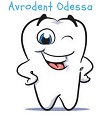Japanese researches have created a microscopically thin film that can cover each tooth individually, preventing the development of caries and giving the teeth a white appearance.
The described “ dental overlay “ is made of wear-resistant and extremely elastic material, based on calcium hydroxyapatite (mineral which contains in natural tooth enamel).
Covering the teeth with this material should not only protect against caries, but also against hyperesthesia (hypersensivity) of the teeth.
The thickness of the film that mimics natural enamel is only 0,004 millimiter.
It was created in vacuum, directing the laser beam to hydroxyapatite crystals, as a result of which they split into separate particles.
These particles fell on pre-heated salt crystals, which were then picked up with filter paper and dried. This was a film that could be lifted with tweezers.
There are pores on the film through which liquid and air can come out so that no bubbles form on the surface of the tooth under the film.
The only problem with such coverage, according to the scientist, is that it takes a whole day.
Currently, hydroxyapatite elastic film is colorless, but it can be coloured for use in cosmetic dentistry.
Artificial tooth enamel as a coating was tested on the removed teeth, but tests on animals will soon begin, and then on people, and, according to Khantsu, first of all, on the creators of the new material themselves.
Until that time, when it can be used to cover the dentin – the sensitive tissue of the tooth under the enamel – will be, according to scientists, at least five years.
In aesthetic dentistry, artificial enamel that can give a white color to teeth can be applied after three years.
The technology developed by Khontsu together with Kazushi Yoshikawa from Osaka Dental University, patented in Japan and South Korea, is preparing applications for patenting in the United States, Europe and China.
